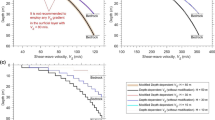Abstract
Amplification is a key paramter considered to account modifcation of seimic wave in the soil for earthquake resistance design of structure placed on soil. Initially, earthquake wave amplifications are related with shear wave velocity (Vs) ratio of soil and foundation layer, and then it was related to average value of Vs up to 30 m (V30s ). Application of V30s concept to represent amplification in shallow bedrock sites is questionable and has rock velocity added to soil velocity. In this study, shallow bedrock sites in Bengaluru, Chennai, Coimbatore and Vishakhapatnam has been analyzed to understand amplifications and its proximity to V30s . The site response calculations are done using one-dimensional nonlinear approach. Intraplate recordings from around the world suitable for the study area are selected. For comparison with known data, the amplification factors are evaluated considering the period ranges similar to international codes. Then, considering spectral signatures from response spectra for all site rock and surface motions, the factors are calculated for period range 0.01–0.06 s and 0.05–1.0 s. Based on the study, only one mid-period amplification factor has been proposed. This amplification factor represents the significant amplification of the site. Acceleration spectra show similar trends for different site classes irrespective of the fact that profiles are selected based on Vs values or SPT-N values. This is observed over a wide range of results and indicates shear modulus as an influencing parameter. Comparison of spectral signatures for different site classes suggests that amplification reduces as the modulus of the soil column increases. Thus, it may be appropriate to classify sites based on shear modulus of soil column.









Similar content being viewed by others
References
BSSC (2004) NEHRP recommended provisions for seismic regulations for new buildings and other structures 2003 edition. Part 1: provisions. Report no. FEMA 450, Building seismic safety council for the federal emergency management agency, Washington, DC, USA
IBC (2009) International building code, 5th edn. International Code Council Inc, Falls Church
Standards Australia (2007) Structural design actions-earthquake actions in Australia, AS 1170.4-2007, Sydney, Australia
Comite Europeen de Normalisaton (CEN) (2001) prEN 1998-1-Eurocode 8: design of structures for earthquake resistance part I: general rule, seismic actions and rules for buildings, draft no. 3, Doc CEN/TC250/SC8/N288, May, Brussels
China Net for Engineering Construction Standardization (2010) Code for seismic design of buildings, GB 50011-2010. China Building Industry Press, Beijing
IS 1893 (2016) Indian standard criteria for earthquake resistant design of structures, part 1—general provisions and buildings. Bureau of Indian Standards, New Delhi
Kim DS, Yoon JK (2006) Development of new site classification system for the regions of shallow bedrock in Korea. J Earthq Eng 10(3):331–358
Anbazhagan P, Neaz Sheikh M, Parihar A (2013) Influence of rock depth on seismic site classification for shallow bedrock regions. Nat Hazard Rev. https://doi.org/10.1061/(ASCE)NH.1527-6996.0000088
Anbazhagan P, Parihar Aditya, Rashmi HN (2012) Review of correlations between SPT N and shear modulus: a new correlation applicable to any region. Soil Dyn Earthq Eng 36:52–69
Chandrakanth Bolisetti, Whittaker Andrew S, Mason Benjamin H, Ibrahim Almufti, Michael Willford (2014) Equivalent linear and nonlinear site response analysis for design andrisk assessment of safety-related nuclear structures. Nucl Eng Des 275:107–121
Hashash YMA, Groholski DR, Phillips CA, Park D, Musgrove M (2012) DEEPSOIL 5.1. User manual and tutorial
Kaklamanos J, Bradley BA, Thompson EM, Baise LG (2013) Critical parameters affecting bias and variability in site-response analyses using KiK-net Downhole Array Data. Bull Seismol Soc Am 103(3):1733–1749
Kim B, Hashash YMA (2013) Site response analysis using downhole array recordings during the March 2011 Tohoku-Oki earthquake and the effect of long-duration ground motions. Earthq Spectra 29(S1):S37–S44
Newmark NM, Hall WJ (1982) Earthquake spectra and design. Earthquake Engineering Research Institute, Oakland
Malhotra PK (2006) Smooth spectra of horizontal and vertical ground motions. Bull Seismol Soc Am 96(2):506–518
Dobry R, Borcherdt RD, Crouse CB, Idriss IM, Joyner WB, Martin GR, Power MS, Rinne EE, Seed RB (2000) New site coefficients and site classification system used in recent building seismic code provisions. Earthq Spectra 16:41–67
Anbazhagan P, Prabhakaran A, Madhura H, Moustafa Sayed S R, Al-Arif Nassir S N (2017) Selection of representative shear modulus reduction and damping curves for rock, gravel and sand sites from the KiK-Net downhole array. Nat Hazard Rev. https://doi.org/10.1007/(ASCE)NH.11069-017-2944-x
Vipin KS, Anbazhagan P, Sitharam TG (2009) Estimation of peak ground acceleration and spectral acceleration for South India. Nat Hazards Earth Syst Sci 9:865–878
Kumar LBVK, Rao GV, Rao SK (2012) Seismic hazard analysis of low seismic regions, Visakhapatnam: probabilistic approach. J Ind Geophys Union 16(1):11–20
Anbazhagan P, Vinod JS, Sitharam TG (2009) Probabilistic seismic hazard analysis for Bangalore. Nat Hazards 48(2):145–166
Ramanna CK, Dodagoudar GR (2012) Seismic hazard analysis using the adaptive kernel density estimation technique for Chennai City. Pure Appl Geophys. https://doi.org/10.1007/s00024-011-0264-8
Raghukanth STG (2011) Seismicity parameters for important urban agglomerations in India. Bull Earthq Eng 9(5):1361–1386
Aditya P (2014) Seismic site classification and response studies of shallow bedrock sites. Ph.D. thesis, IISc Bangalore, Bangalore, India
Anbazhagan P, Aditya P (2015) Selection of modulus and damping curves for site response study. In Proceedings of 6th international geotechnical symposium on disaster mitigation in special geoenvironmental conditions, January 21–23, 2015, Chennai, India, pp 161–164
Hall WJ, Mohraz B, Newmark NM (1975) Statistical studies of vertical and horizontal earthquake spectra. Nathan M. Newmark Consulting Engineering Services, Urbana
Acknowledgements
Authors thank ‘‘Board of Research In Nuclear Sciences (BRNS),’’ Department Of Atomic Energy (DAE), Government of India for funding the project titled ‘‘Seismic site classification for Indian shallow soil deposits’’ (Ref No. Sanction 615 No 2012/36/33-BRNS-1656 dated 10/10/12).
Author information
Authors and Affiliations
Corresponding author
Additional information
Publisher's Note
Springer Nature remains neutral with regard to jurisdictional claims in published maps and institutional affiliations.
Rights and permissions
About this article
Cite this article
Parihar, A., Anbazhagan, P. Site Response Study and Amplification Factor for Shallow Bedrock Sites. Indian Geotech J 50, 726–738 (2020). https://doi.org/10.1007/s40098-020-00410-w
Received:
Accepted:
Published:
Issue Date:
DOI: https://doi.org/10.1007/s40098-020-00410-w




